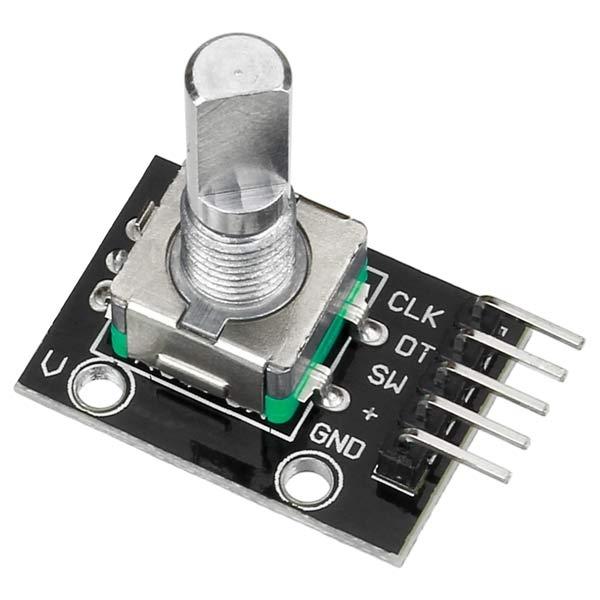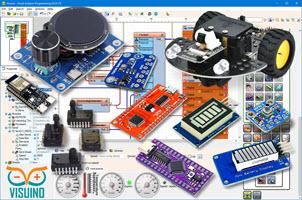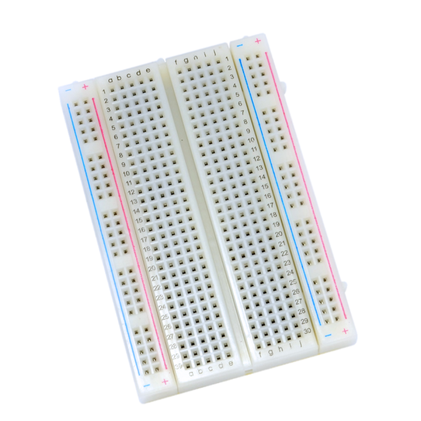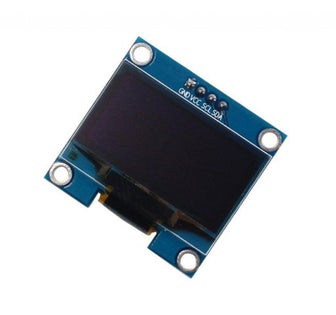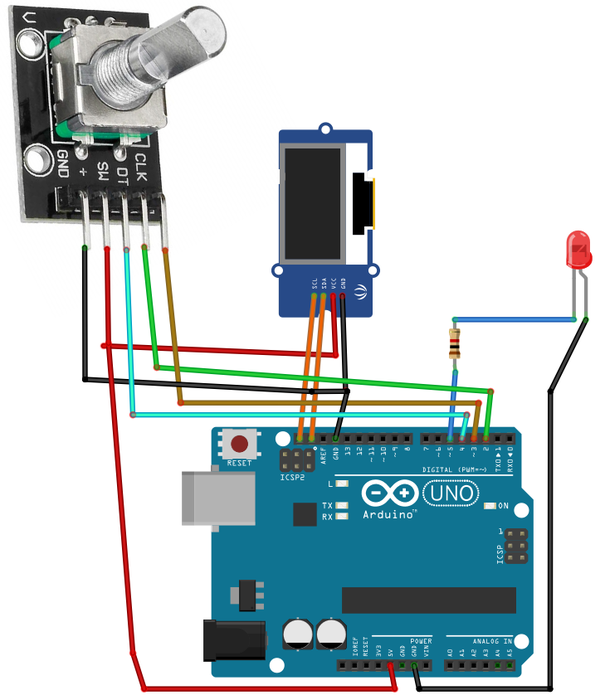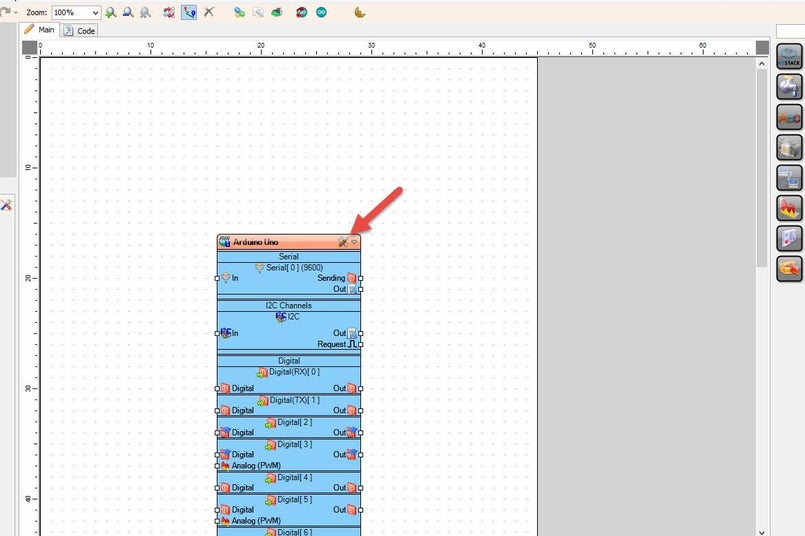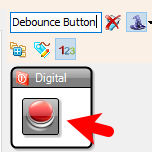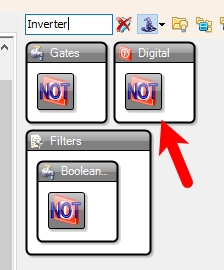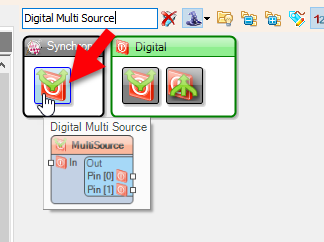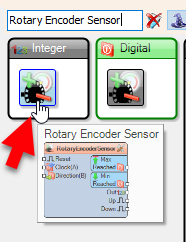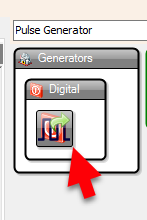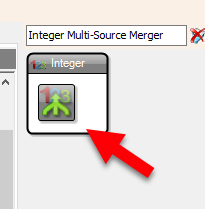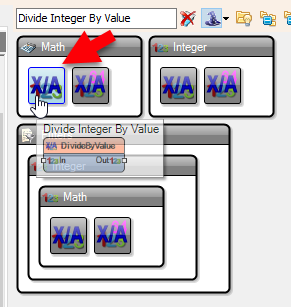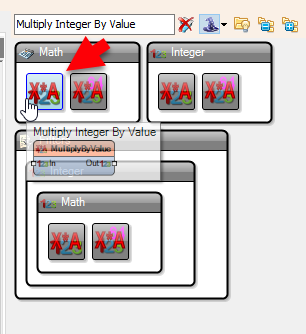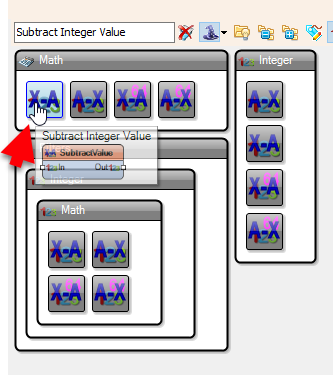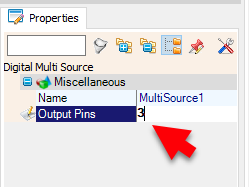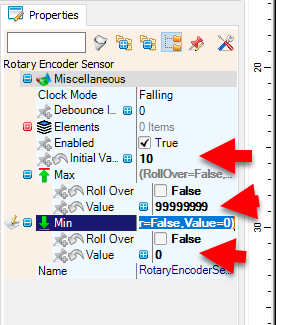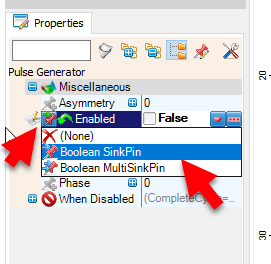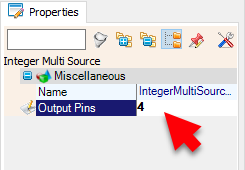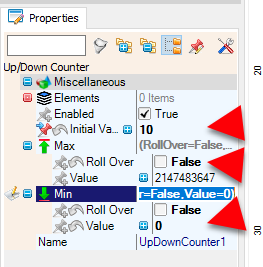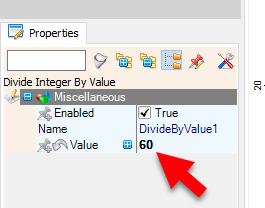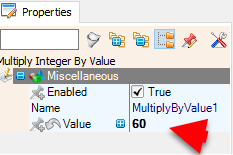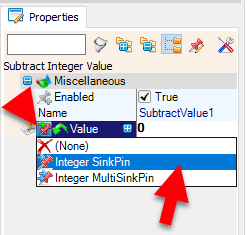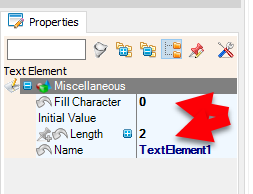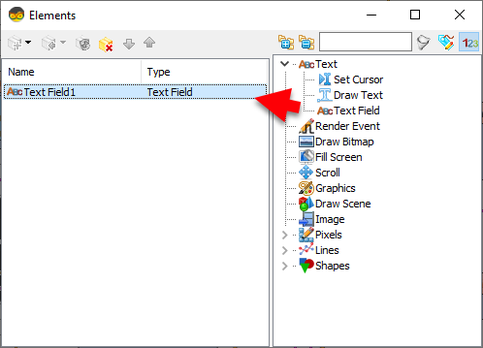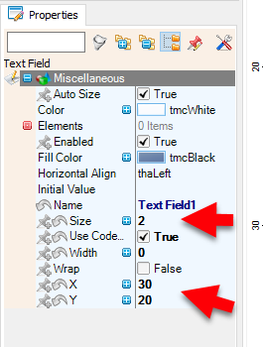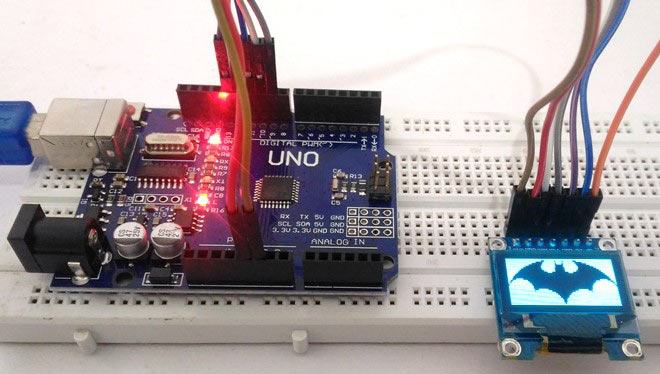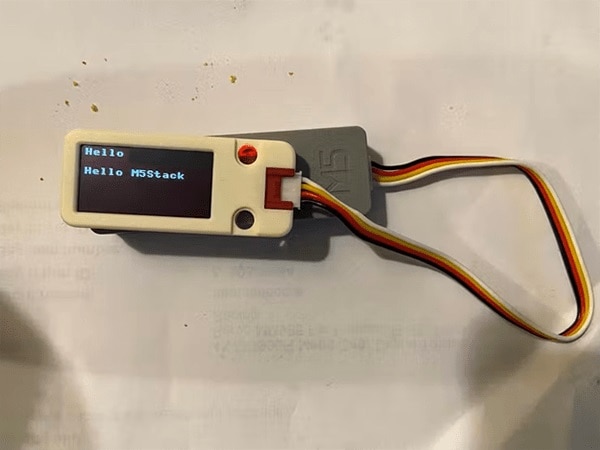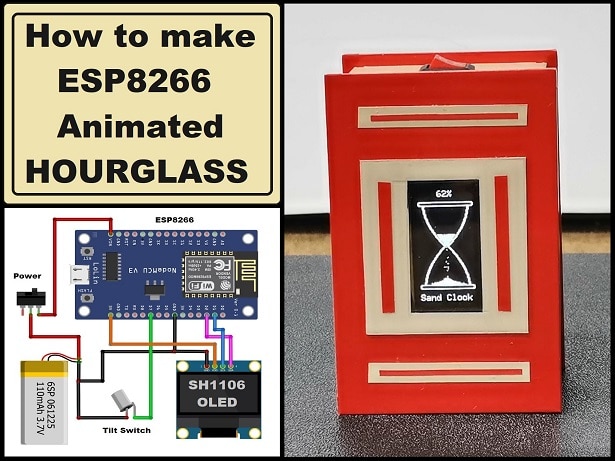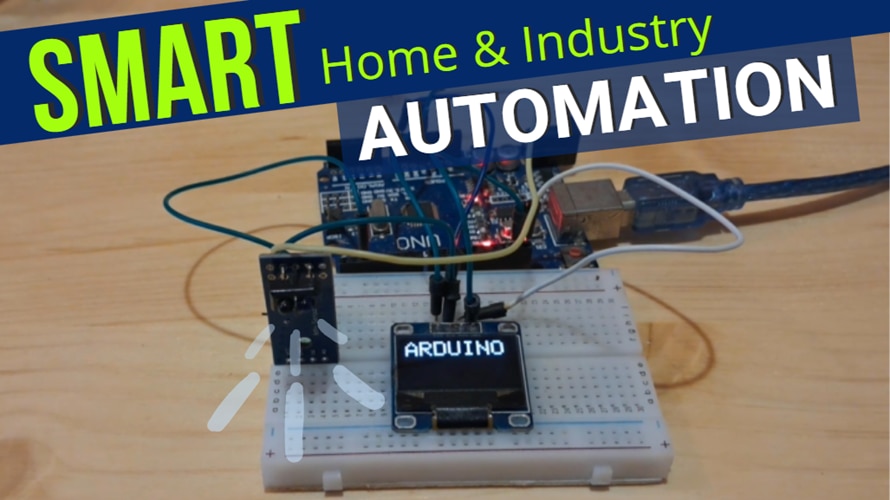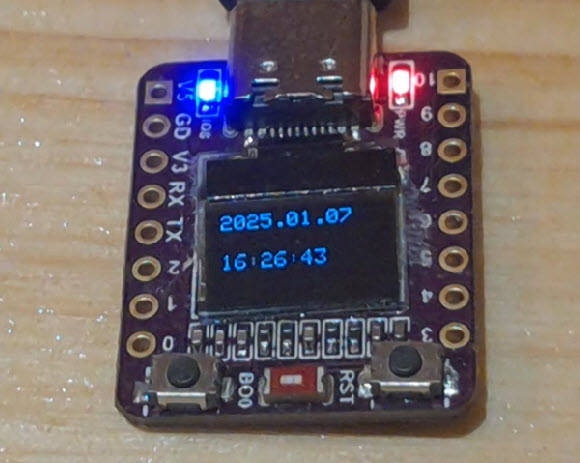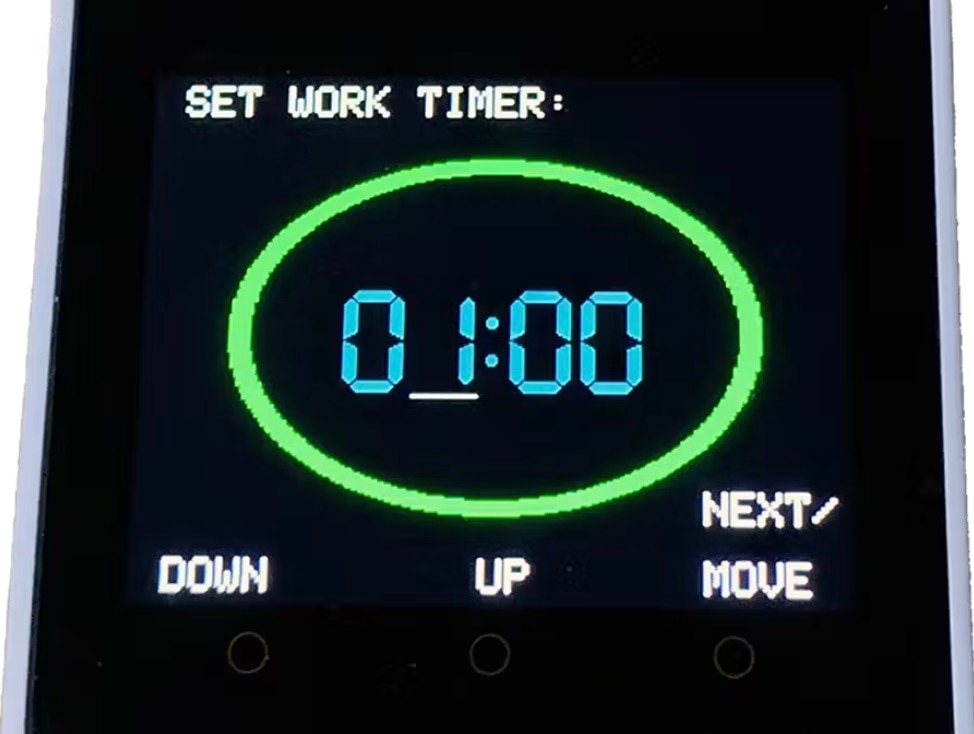Arduino OLED Countdown Timer Using Visual Programming
2025-06-06 | By Ron Cutts
License: General Public License Addressable LEDs Displays Encoder LED / Display Drivers LED Matrix LEDs / Discrete / Modules Real Time Clocks (RTCs) Arduino
Use a rotary encoder to set the countdown duration
Start the timer by pressing the encoder button
Watch the countdown update in real time on an OLED display
Trigger a Red LED when the countdown reaches zero
All done with no coding, just simple drag-and-drop blocks in Visuino!
Perfect for beginners and makers looking for a practical timer easy to build.
Watch the Video!
Step 1: What You Will Need
Arduino UNO or any other Arduino board
Visuino software: Download here
Step 2: The Circuit
🔌 OLED Display Connections
Connect OLED Display pin [SCL] to Arduino pin [SCL]
Connect OLED Display pin [SDA] to Arduino pin [SDA]
Connect OLED Display pin [VCC] to Arduino pin [5V]
Connect OLED Display pin [GND] to Arduino pin [GND]
🔄 Rotary Encoder Module Connections
Connect Encoder pin [CLK] to Arduino pin [3]
Connect Encoder pin [DT] to Arduino pin [2]
Connect Encoder pin [SW] to Arduino pin [4]
Connect Encoder pin [+ (VCC)] to Arduino pin [5V]
Connect Encoder pin [GND] to Arduino pin [GND]
🔴 LED Output Connection
Connect the 220Ω resistor to Arduino pin [5]
Connect the anode (long leg) of the Red LED to the resistor
Connect the cathode (short leg) of the LED to Arduino [GND]
Step 3: Start Visuino, and Select the Arduino UNO Board Type
The Visuino: https://www.visuino.com also needs to be installed.
Start Visuino as shown in the first picture. Click on the "Tools" button on the Arduino component (Picture 1) in Visuino. When the dialog appears, select "Arduino UNO" as shown in Picture 2
Step 4: In Visuino Add Components
Add "OLED I2C" component
Add "Debounce Button" component
Add "Digital (Boolean) Inverter (Not)" component
Add 2X "Digital Multi Source" component
Add "Rotary Encoder" component
Add "Toggle(T) Flip-Flop" component
Add "Pulse Generator" component
Add 3X "Integer Multi Source" component
Add 2X "Integer Multi-Source Merger" component
Add "Up/Down Counter" component
Add "Divide Integer By Value" component
Add "Multiply Integer By Value" component
Add "Subtract Integer Value" component
Add "Formatted Text" component
Step 5: In Visuino Set Components
Select "MultiSource1" and in the properties window set "Output Pins" to 3
Select "UpDownCounter1" and in the properties window select: "Initial Value" and set 10
Set "Max > Roll Over" to False, "Min > Roll Over" to False, and Min Value to 0.
Select "PulseGenerator1", in the properties window, select "Enabled", click on the pin icon, select "Boolean SinkPin", and set "Enabled" to False
Select "MultiSource2" and in the properties window set "Output Pins" to 3
Select "RotaryEncoderSensor1", in the properties window select: "Initial Value", set 10, set "Max > Roll Over" to False, "Min > Roll Over" to False, and Min Value to 0.
Select "DivideByValue1" and in the properties window set Value to 60
Select "MultiplyByValue1" and in the properties window set Value to 60
Select "SubtractValue1", in the properties window select Value, click on the Pin Icon, and select "Integer SinkPin"
Select "FormattedText1" and in the properties window set "Text" to: %0:%1
Double click on "FormattedText1", in the Elements window, drag 2X "Text Element" to the left side, and for both in the Properties window set "Fill Character" to 0, and "Length" to 2
Double click on "DisplayOLED1" and in the Elements window drag "Text Field" to the left side and in the properties window set "Size" to 2 "X" to 30 and "Y" to 20
Step 6: In Visuino Connect Components
Connect Arduino digital pin [2] to "RotaryEncoder1" pin Clock (A)
Connect Arduino digital pin [3] to "RotaryEncoder1" pin Data (B)
Connect Arduino digital pin [4] to "Button1" pin [In]
Connect "Button1" pin [Out] to "Inverter1" pin [In]
Connect "Inverter1" pin [Out] to "MultiSource1" pin [In]
Connect "MultiSource1" pin [Out][0] to "UpDownCounter1" pin [Reset]
Connect "MultiSource1" pin [Out][1] to "FormattedText1" pin [Clock]
Connect "MultiSource1" pin [Out][2] to "TFlipFlop1" pin [Clock]
Connect "DivideByValue1" pin [Out] to "IntegerMultiSource1" pin [In]
Connect "IntegerMultiSource1" pin [Out][0] to "FormattedText1" pin [Clock]
Connect "IntegerMultiSource1" pin [Out][0] to "FormattedText1" > "TextElement1" pin [In]
Connect "IntegerMultiSource1" pin [Out][1] to "MultiplyByValue1" pin [In]
Connect "MultiplyByValue1" pin [Out] to "SubtractValue1" pin [Value]
Connect "SubtractValue1" pin [Out] to "FormattedText1" pin [Clock]
Connect "SubtractValue1" pin [Out] to "FormattedText1" > "TextElement2" pin [In]
Connect "FormattedText1" pin [Out] to "DisplayOLED1" > "Text Field1" pin [Clock]
Connect "FormattedText1" pin [Out] to "DisplayOLED1" > "Text Field1" pin [In]
Connect "DisplayOLED1" pin [Out] to "Arduino" > "I2C" pin [In]
Connect "UpDownCounter1" pin [Out] to "IntegerMultiMerger1" pin [In][0]
Connect "IntegerMultiMerger1" pin [Out] to "IntegerMultiSource2" pin [In]
Connect "IntegerMultiSource2" pin [Out][0] to "DivideByValue1" pin [In]
Connect "IntegerMultiSource2" pin [Out][1] to "SubtractValue1" pin [In]
Connect "IntegerMultiSource2" pin [Out][2] to "CompareValue1" pin [In]
Connect "IntegerMultiSource2" pin [Out][3] to "FormattedText1" pin [Clock]
Connect "CompareValue1" pin [Out] to "Arduino" digital pin [5]
Connect "PulseGenerator1" pin [Out] to "DigitalMultiSource1" pin [In]
Connect "DigitalMultiSource1" pin [Out][0] to "UpDownCounter1" pin [Down]
Connect "DigitalMultiSource1" pin [Out][1] to "FormattedText1" pin [Clock]
Connect "RotaryEncoderSensor1" pin [Out] to "MultiSource2" pin [In]
Connect "MultiSource2" pin [Out][0] to "IntegerMultiMerger1" pin [In][1]
Connect "MultiSource2" pin [Out][1] to "UpDownCounter1" pin [Reset]
Connect "MultiSource2" pin [Out][2] to "UpDownCounter1" pin [InitialValue]
Connect "TFlipFlop1" pin [Out] to "PulseGenerator1" pin [Enabled]
Connect "UpDownCounter1" pin [MinReached] to "TFlipFlop1" pin [Reset]
Step 7: Generate, Compile, and Upload the Arduino Code
In Visuino, at the bottom, click on the "Build" Tab, make sure the correct port is selected, then click the "Compile/Build and Upload" button.
Step 8: Play
When you power on the Arduino, the OLED display will show the default countdown time of 00:10.
You can easily adjust the countdown time by rotating the rotary encoder left or right. Once you've set your desired time, simply press the encoder button to start the countdown.
During the countdown, you can pause or resume at any time by pressing the button again.
When the countdown reaches zero, a red LED will turn ON to signal that the time is up.
Congratulations! You have completed your project with Visuino. Also attached is the Visuino project for this. You can download it and open it in Visuino: https://www.visuino.com
Download Visuino File: OLED-CountDown-Timer-Encoder.visuino







